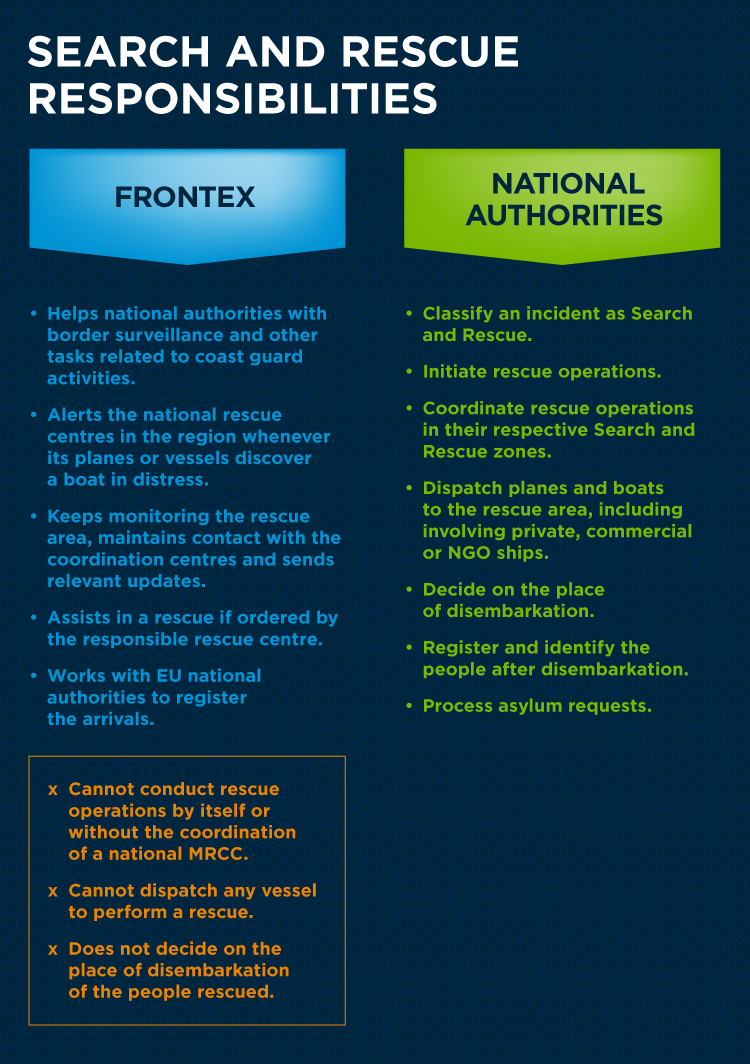Every year, smugglers send hundreds of thousands of people on treacherous journeys across the sea to reach the European Union. They cram people into unsafe boats with hardly any life vests, food, water, or fuel, with little concern for their safety.
This is why it is crucial to spot people in distress at sea before it is too late. Frontex aerial surveillance plays a vital role in this. Just last year, Frontex planes monitoring the Mediterranean Sea supported the rescue of 24 000 people.
Frontex planes and drones patrol selected areas beyond the EU external borders as part of the agency's multipurpose aerial surveillance (MAS). The goal is to better understand what is happening and establish an early warning mechanism. If any of the Frontex planes or ships see a boat in need of assistance, the agency informs the national authority responsible for the rescue activities in the area and follows its instructions in line with international maritime law.
Frontex planes frequently encounter overcrowded boats in peril within the internationally recognised Libyan Search and Rescue (SAR) Region. In accordance with international law, search and rescue operations are always coordinated by the national rescue centres. While the agency does not cooperate with Libyan authorities in any capacity, it is obliged by the law to inform the country’s rescue coordination centre (RCC) of any boat in distress within their SAR zone.
Every time a Frontex plane comes across a boat in distress, it immediately alerts all the neighbouring RCCs: Italy, Malta and Tunisia to potentially speed up the rescue operation and improve the coordination. Other actors in the area, including commercial ships and NGOs, follow the same protocol.
Locating a small boat in the middle of the sea is a daunting task, which is why once a Frontex plane comes across one, it remains vigilant and continues monitoring the area until rescue arrives or until the plane is forced to leave because of low fuel. All this time, it remains in contact with the rescue coordination centres to update them on the boat’s location. This is especially important because people smugglers often orchestrate simultaneous departures, leaving other boats in need of help nearby.
Based on information provided by Frontex, the relevant rescue centre initiates a rescue operation. Frontex shares the boat’s location, its condition, estimated number of persons aboard, any navigation and communication equipment, along with the weather and sea conditions in the area.
The rescue centre dispatches boats that are either the closest to the scene or best equipped to do the job. These may include national specialised coast guard, commercial, military, or private vessels, as well as those deployed by Frontex. Throughout the rescue operation, the coordinating rescue centre stays in constant contact with boats and aircraft involved.
The Central Mediterranean Sea region has an estimated area of approximately 500,000 square kilometres, making it roughly equivalent in size to countries like France or Spain. This makes discovering a boat the size of a van or a small bus in the vast sea extremely difficult and puts a premium on the time for a rescue vessel to reach it.
In an emergency, where lives are at stake, Frontex issues a mayday call to alert all vessels nearby of the imminent danger.
Based on international law, a mayday relay can be triggered by any aircraft or boat witnessing an emergency when the boat is adrift, when there is fire on board, when the boat is sinking or when people are in the water.
Any misuse of a mayday call, especially amid ongoing rescue operations elsewhere in the area, could create dangerous confusion and jeopardise more lives.
